Twenty years ago, nine artists from Australia and the Asia-Pacific region descended on Toolangi Forest. There, they each created a sculpture, hewing shapes and meaning out of the materials the forest had to offer. Today, only a few of these pieces remain intact; most are in differing stages of decay, or have been entirely reclaimed by the forest. Renewed interpretive boards share photos of the works in their youth and information about the pieces and the artists. The pieces were never intended to last forever, but to become part of the organic cycle of life in the forest.
Two decades later, Sharon Plummer took it upon herself to revive the sculpture trail. This time, fifteen Victorian artists would be commissioned to create works in situ, on sites located in amongst the remnants of the last event. For two weeks the artists worked in the forest, sourcing their materials, adjusting their plans and creating their pieces. They stayed in a bed and breakfast nearby, and participated in a program of events that drew in crowds from around Victoria during the construction of their sculptures.

Now the forest is quiet again, although on the day I visited the trail, sculptor Scott Selkirk was making some final adjustments to his piece. Children had been using the protruding bolts on his twisted tree form as a climbing frame, so it was determined safer to remove the excess length of the bolts. Scott held a rainbow umbrella to keep off the rain, while his assistant, his brother Tobias, sent sparks flying as the bolts broke away.
Yet the sculpture trail is full of strange and surprising sights like these. Our path takes us first through a field of stark white branches set amongst the brush of the understorey. These are neurons, Sharon tells me. They were created by Marynes Avila, whose work is heavily informed by science. Marynes explains that during her site analysis she was taken by the idea of the connections between the roots of the trees. Her work is an expression of ‘the brain of the forest’. Walking amongst the branch-neurons with rain pounding into the dark canopy above, the forest does feel alive.
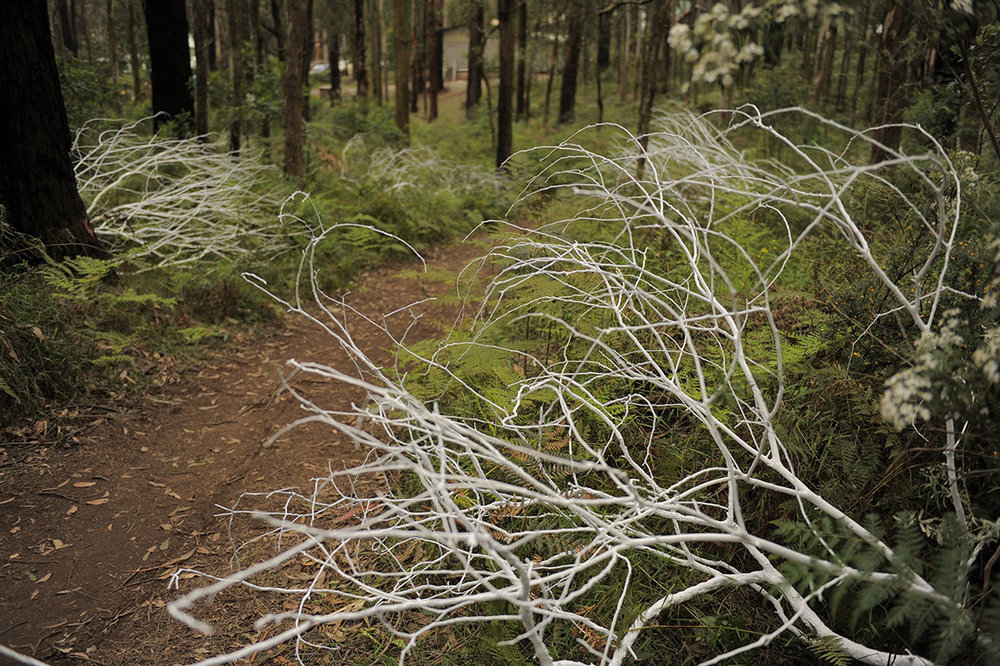
There is movement in the branches, the gentle swaying of fabric. These are Isadora Vaughan’s Thick Airs, rectangles of material hanging between trees, dyed in vivid hues created from ingredients sourced around the site: clay, lichen, sap and rhododendrons. The cloths hang heavy with the rain, but Sharon tells me that Isadora wants the colours to change and fade with the forest’s seasons.
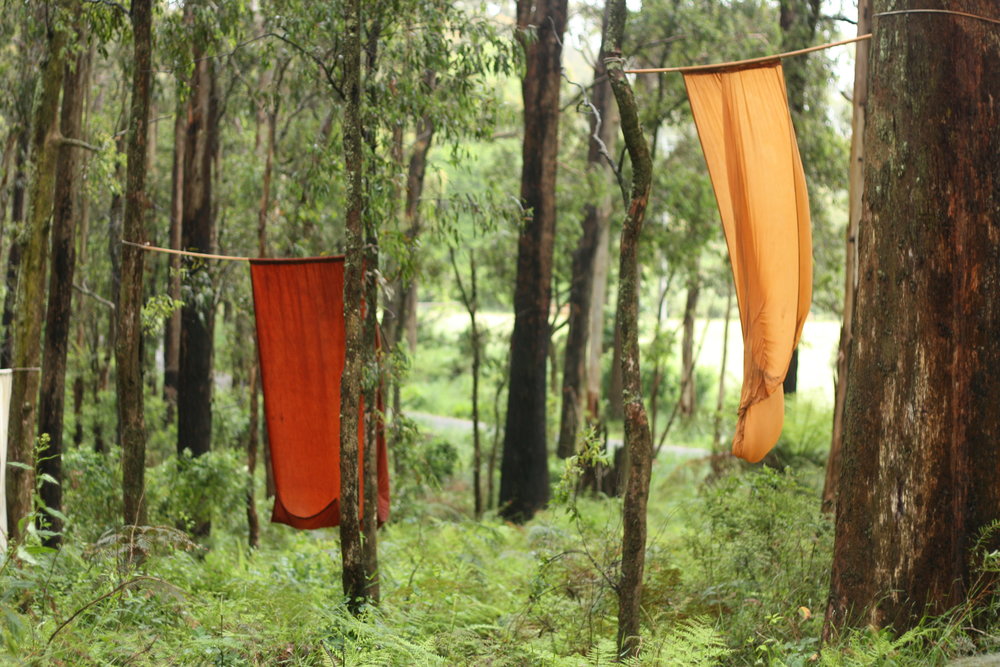
We come upon a round shape fashioned from twigs and branches. Brigit Heller’s piece is inspired by one of the last remaining sculptures from 1996: a hefty circle of darkened tree roots, which has become the trail’s unofficial emblem. As Brigit collected the branches that her piece would be composed of, she became fascinated by the inside of these branches that her sculpture opens out for the viewer. ‘You can read the history of a tree,’ Brigit explains. She loves the symbolism of the circle and all that it represents: ‘the continuum of life; it’s just so full of meaning’. When she heard that someone had been doing yoga beside her sculpture, she was thrilled: ‘It totally captures my intention for some sort of stillness’.
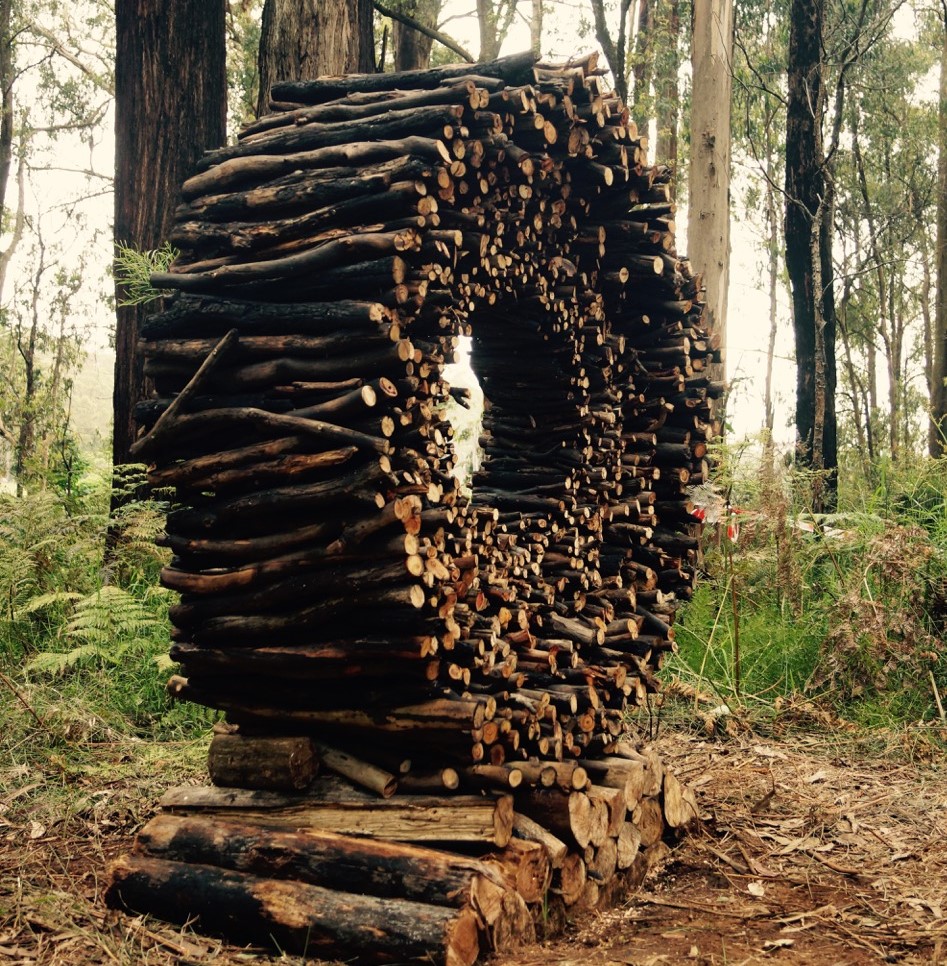
Gay Chatfield’s work invites interaction in a different way. Her woven forms are inspired by the dens that children inevitably build in the forest. Usually working with willow, Gay was challenged by the limitations of the native forest environment, but she soon found her material in the unlikely form of an invasive tree – sycamore maple, which was in the process of being removed from the forest, and which Gay was able to give a new purpose to in her sculpture. The tree proved to have the flexibility and strength needed for the weaving. Gay’s work is entitled A Place to Dream, and invokes an irresistible urge to crawl inside, stand up inside the tall structures and peer out at the forest canopy through the weave. A sturdy pathway of fleshy bark segments leads the walker between the dens and the trail.
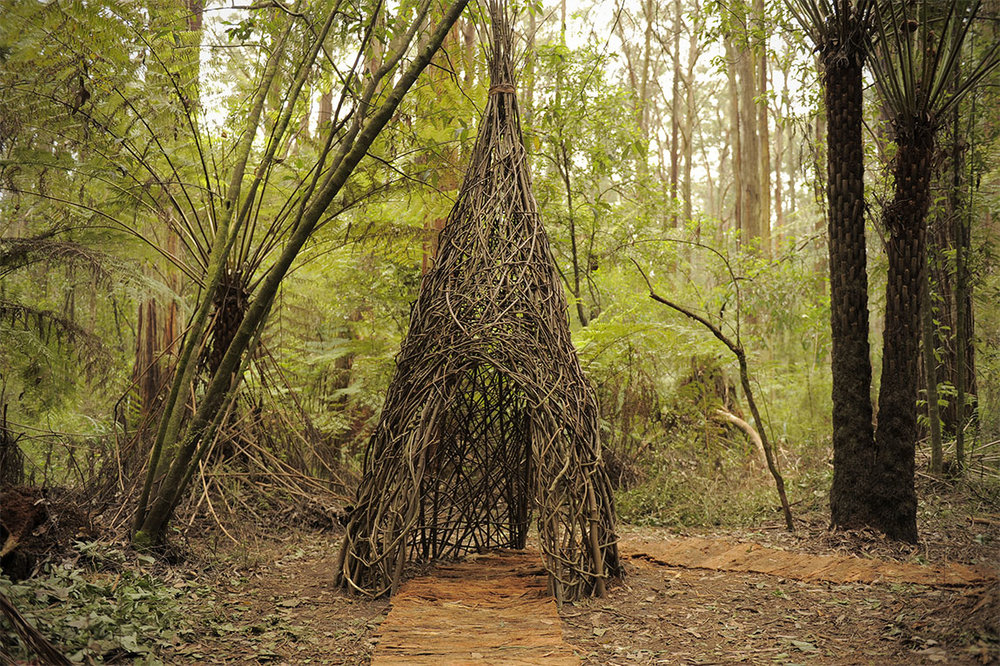
Further along, and Ali Griffin’s wooden sculpture rises out of the forest floor. From above, Precious is an undulating shape composed of burnt logs, but crouch down to the level of the leaf litter and you’ll find that the underside is coated with gold. Using real gold leaf, Ali wanted to draw the viewer’s attention to the contradiction between the worthless and the priceless: what one person may view as worthless (burnt timber) is, to others – and to the forest – priceless; organic matter, a home for insects and wildlife, nourishing even in death. Ali explains that she wanted the blackened branches to be experienced in multiple ways; that the smell of the burnt logs could conjure memories from bushfire to a winter fireplace.

Around each bend in the path is a sculpture both provoking and organic, inspiring thoughts and evoking memories while blending seamlessly into the forest. Scott Selkirk’s work is a feat of engineering, both alive and industrial in its feel. A dead tree curls in on itself, segmented and bolted in place, folding perilously back. Scott said of his piece: ‘The forest has given us so much… It seems that it bends to our will. So I ask, how long will it take before the forest is no longer able to provide all that we ask for?’ On a personal level, Scott is influenced by the issues he has been having with his health. His sculpture asks a question about the state of his own back, as well as the future of the forest: ‘How far can it bend before it breaks?’
At the end of the trail is an unfinished piece hanging between two trees. It is a community weaving, begun during the events in November, but which Sharon hopes is just at the beginning of its life. She wants all visitors to the trail to feel that they can pick up materials and contribute to the tapestry. This is a piece that can grow, despite its temporary nature. All the artists love what Marynes refers to as ‘the non-precious’; the idea that the sculptures can be touched and interacted with, that they have a lifespan by definition, that they will eventually be reclaimed by the forest, where they originated.
It’s what the trail is all about, what Sharon refers to as ‘bridging the gap’; inviting people from all walks of life to enter into another world that we are irrevocably part of. You don’t need to be a scientist; you don’t need to be an artist. The sculpture trail blends worlds: ecology, sculpture, walking, observing, participating. It satisfies what Marynes describes as ‘a need to reconnect with nature. That interconnection between everything that exists. It’s a reconnection with ourselves.’
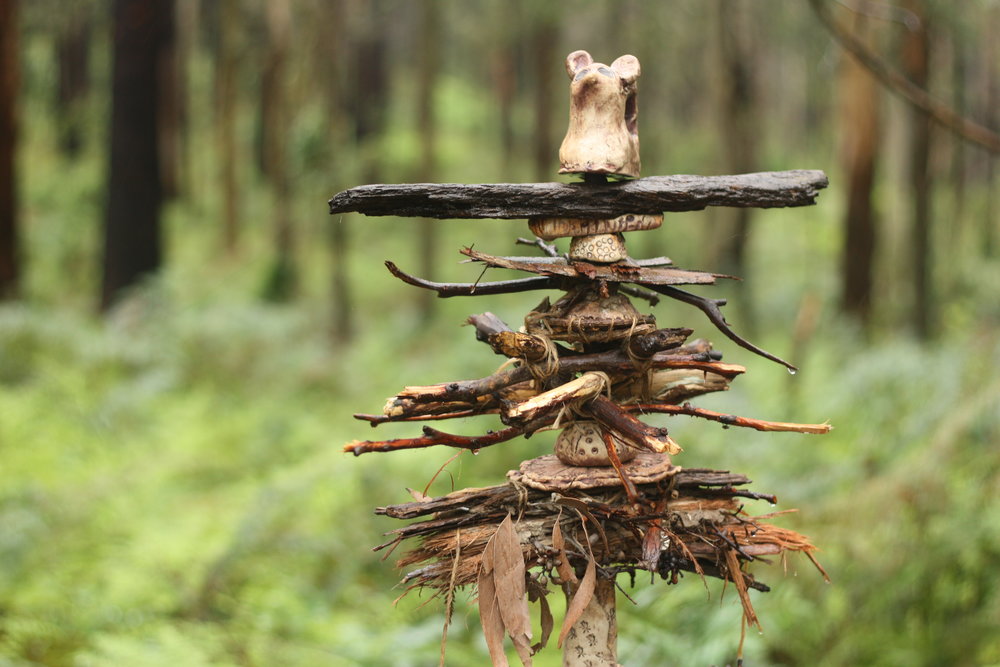
The Toolangi Sculpture Trail is open seven days a week free of charge. It is part of the Toolangi Bushland Reserve that also includes the Yea River Walk.
Visit toolangisculpture.com for more information.
Banner image of the sculpture ‘Will’ by Scott Selkirk, and is courtesy of Karen Goldfinch.

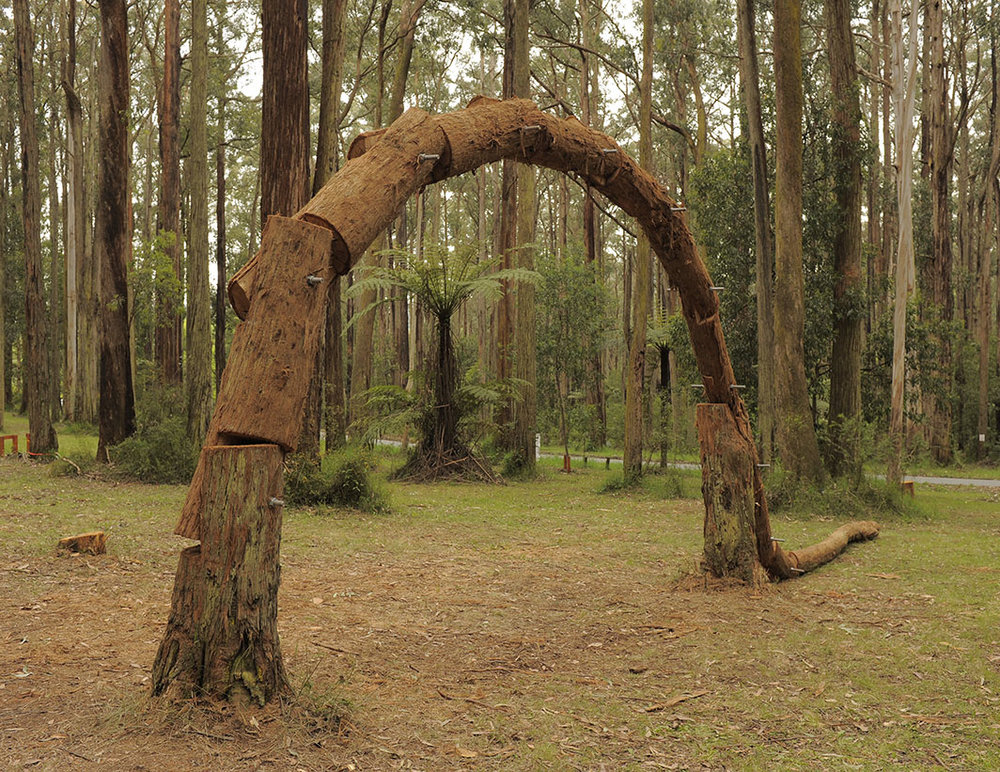
Leave a Reply